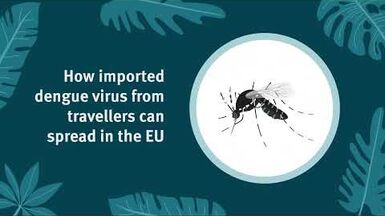Rapid risk assessment: Chikungunya outbreak in Caribbean region
This risk assessment considers the outbreak of chikungunya on the Caribbean island of Saint Martin in early December 2013 which expanded through the Caribbean during the first half of 2014. This is the first documented autochthonous transmission of chikungunya virus in the Americas.
Executive Summary
Possible risk for local transmission of chikungunya in Europe in areas where the mosquito species, potential vectors of chikungunya, are present, need of personal protection measures for travellers, suggested preparedness and prevention measures in EU, are the main conclusions an ECDC risk assessment issued today.
Autochthonous transmission from an imported chikungunya case during the summer season in the EU is possible, assesses ECDC. The risk is linked to importation of virus by infected patients in areas with competent vectors (the mosquito species that can carry chikungunya: Aedes albopictus on mainland Europe and Aedes aegypti – in Madeira): exposure to infected mosquitoes is the principal risk for infection in currently affected areas. In addition, travellers returning from outbreak areas should seek medical care if presenting with chikungunya symptoms and apply personal protection measures to avoid mosquito bites.
The risk assessment provides also suggestions for prevention and preparedness measures in EU, related to the chikungunya outbreak:
- High vigilance regarding imported cases of chikungunya and dengue in the EU: awareness among clinicians and travel clinics in areas where competent vectors are present);
- Preparedness measures in the EU, such as strengthened surveillance systems and rapid notification of cases;
- Vigilance of the EU blood safety authorities regarding the epidemiological situation in the Americas in line with measures taken for West Nile virus infection.
This is the first documented autochthonous transmission of chikungunya virus in the Americas. The outbreak started on the Caribbean island of Saint Martin in early December 2013 and expanded through the Caribbean during the first half of 2014. Recently, suspected autochthonous cases have been reported from Central America (Costa Rica and El Salvador).







